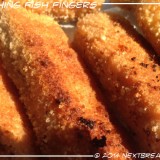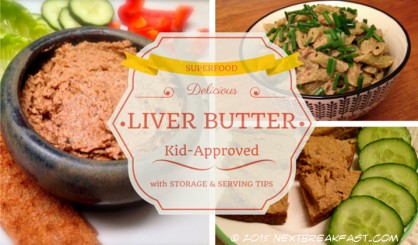Shopping Detective: Bread
 When I don’t have time to bake bread, we buy bread in a supermarket and over the years we have found a few firm favourites.
When I don’t have time to bake bread, we buy bread in a supermarket and over the years we have found a few firm favourites.
All of the bread I buy is sourdough based, with a high rye content and with a short list of ingredients, the purpose of which I can understand.
Why rye?
Rye has lower gluten content than wheat and gluten is claimed to be difficult to digest and a potential allergen.
The phytase level in rye is exceptionally high, which means that phytate (or phytic acid) will be broken down more thoroughly during the fermentation process – phytase is the enzyme needed to break down the phytic acid.
Minerals in wheat flour and rye flour are mainly bound in insoluble complexes with phytate. Dough acidification allows for optimal activity of cereal phytase… Phytate hydrolysis during sourdough fermentation reduces the binding of minerals and increases their bioavailaibility
Encyclopedia of Food Microbiology, edited by Carl A. Bidt
In a nutshell, rye sourdough is easier to digest, has more minerals and is tastier (for us at least) than non sourdough wheat breads.
So here is the list of our favourites:
1. 1688 Steinofenbrot, Rye and wheat sourdough bread. The ingredients are: Wheat flour, Sourdough, Rye Malt Flour, Acidity regulator.
This bread is lovely toasted or not – when its still fresh. It keeps well in the fridge or freezer. Due to high wheat content is quite soft. I love this bread because it tastes just like one particular type from my childhood in Ukraine and luckily my family like it too.
Can be found in Migros, Coop and Denner.
2. Heidevesper, Predominatly rye sourdough bread with a little wheat. It has got a grainier and heavier texture than the 1688 due to the presence of cracked grains (going direction of Pumpernickel) and low wheat content. The ingredients are: Whole rye flour, Sourdough, Water, Wheat, Rye flour, Salt, Yeast.
This bread is very tasty, but as most breads with high rye content and cracked grains is almost impossible to toast. So if you want toast, go for 1688.
Can be found in Coop
3. SlowFood Ancient Rye Bread from Wallis. The ingredients are: Whole rye flour, water, salt, sourdough.
This is the purest and the toughest of them all 🙂 The taste is incredible, but make sure you have strong teeth and you are not looking for a fluffy piece of toast! This can be sliced super thinly and dried in the oven to make kind of rye melba toasts. Would be interesting to try it fresh in Wallis, but when it reaches Coop, its already well into its “immortal” stage.
In Wallis this bread was baked 100s of years ago in the same fashion as today, it doesn’t spoil or mould due to the high acidity imparted by the sourdough fermentation. It would hang in shepherds mountains huts for months as an emergency ration. As seen in the children’s book A Bell for Ursli.
Although not our first choice of bread, it is definitely worth a try to experience pure rye taste and inhale 100s of years of Swiss tradition.
I will be experimenting with this one – making flavoured croutons for after school snacks. Will keep you posted!
Can be found in Coop
4. Finncrisp Original Crackers. Our family favourite cracker. Its tasty, its VERY crispy, its guilt and concern free due to the list of ingredients: Whole rye flour 71%, Whole Rye Sourdough 23%, Water, Salt, Yeast.
These keep forever in an airtight container. We eat them with liver butter, cheese, smoked salmon or with dips!
Can be found in Coop
Update 25th of September 2014.
Today I found a lovely bread in Migros:
5. Organic Rye Sourdough. This is the closest to the bread I bake at home. It contains no added yeast and is made using a classic sourdough technique that involves three fermenting stages. It also has no added wheat and uses sea salt and not table salt. The ingredients are: natural rye sourdough 31%, water, rye meal 22%, rye flour 13%, wholegrain rye flour 5%, sunflower seeds 4%, sea salt.
I then interrogated interviewed a friendly baker in Migros about other breads they have that would fit into a category of traditional, long-fermentation methods.
He proudly presented to me two loaves that they make themselves on premises, that undergo a 24 hour fermentation. They are not sourdough, but long fermentation is still much better than a quick rise bread. It improves the flavour, texture, digestibility and bio-availiability of minerals.
6. Pane Passione Weizenbrot. This is your traditional twisty, rustic baguette with crispy crust and soft middle. It was still hot in the early morning when I was there. The ingredients are: Wheat flour, water, wheat protein (gluten), iodised salt, yeast, wheat starch, barley malt, ascorbic acid.
Personally I can’t digest this type of bread well despite the long fermentation, but for some of you it may still be a better alternative to more modern loaves with additives.
7. Pane Passione Rustico Dunkles Weizenbrot. The darker variety of the above with rye, spelt and seeds. The ingredients are: Wheat flour, rye flour 7%, water, wheat protein, linseed 3.5% , sunflower seeds 3%, wheat malt flakes, flaked spelt, iodised salt, rye meal 1%, sesame seeds 1%, dried wheat sourdough, yeast, wheat starch, ascorbic acid.
Notice, that although sourdough is in the ingredients list, it does not mean that sourdough technique is used. It is simply a flavouring, albeit a natural one, added to the dough. The friendly baker confirmed this, he said they add dry or liquid sourdough flavour to some breads but don’t use it to ferment bread. These powders do impart flavour, but they have no live bacteria in them, so they do not take part in the dough fermentation.
The presence of rye however is beneficial, as rye contains high amounts of phytase, which means that during the 24 hour fermentation more of the mineral-binding physic acid will be broken down.
The following two are not made on premises, but the friendly baker assured me that they are made using the sourdough technique. However I wouldn’t buy them because the list of ingredients is too long, they contain glucose, preservative and vegetable oils.
8. Deutches Dinkel-Quarkbrot
9. Deutches Roggenmischbrot
On further exploration of Coop online assortment, I found one bread that is not explicitly listed as a sourdough, however in the description there is mention of “Vorteig” (pre-ferment, which is either sourdough or at least indicates multiple stage process), prolonged fermentation and a traditional baking method. Added sugar but no glucose and no preservatives. And it’s organic. This wouldn’t be my first choice, but its interesting to see what’s in an organic loaf, the decision to eat or not to eat is yours.
10. Naturaplan Bio Tessinerbrot dunkel. The ingredients are: white wheat flour, half-white wheat flour, rye flour, linseed, sesame, sunflower seeds, rapeseed oil, oat and wheat flakes, yeast, iodised salt, skim milk powder, roasted rye flour, whey powder, sugar, milk protein, wheat gluten, shoe milk powder, acerola powder on manioc starch, enzymes.
You can talk to your local baker too! Look for artisanal breads at local markets, ask about ingredients and fermentation times. Read the labels, if it takes you longer to read the label than to eat a slice of bread, you probably shouldn’t be eating it.if it takes you longer to read the label than to eat a slice of bread, you probably shouldn’t be eating it. The good keywords that mean “digestible”, “more minerals” and indicate a traditional bread making process are Roggen (rye), Sauerteig (sourdough), Vorteig (pre-ferment), Mutterteig (mother dough).
You are welcome to leave comments, questions and your bread finds so we can all share the knowledge!


































Fantastic ! thanks so much for the “bread excursion”. Steinofenbrot is one of our favorite too, thanks for pointing it out to me ..
I would also add my another favorite one, which can be found in Alnatura, Migros range –
http://www.alnatura.de/Alnatura%20Produkte/Produktsuche/Bio-Dinkel-Gruenkern-Brot-500g
Will you be writing the same about the grill sausages ? Which ingredients to avoid, etc